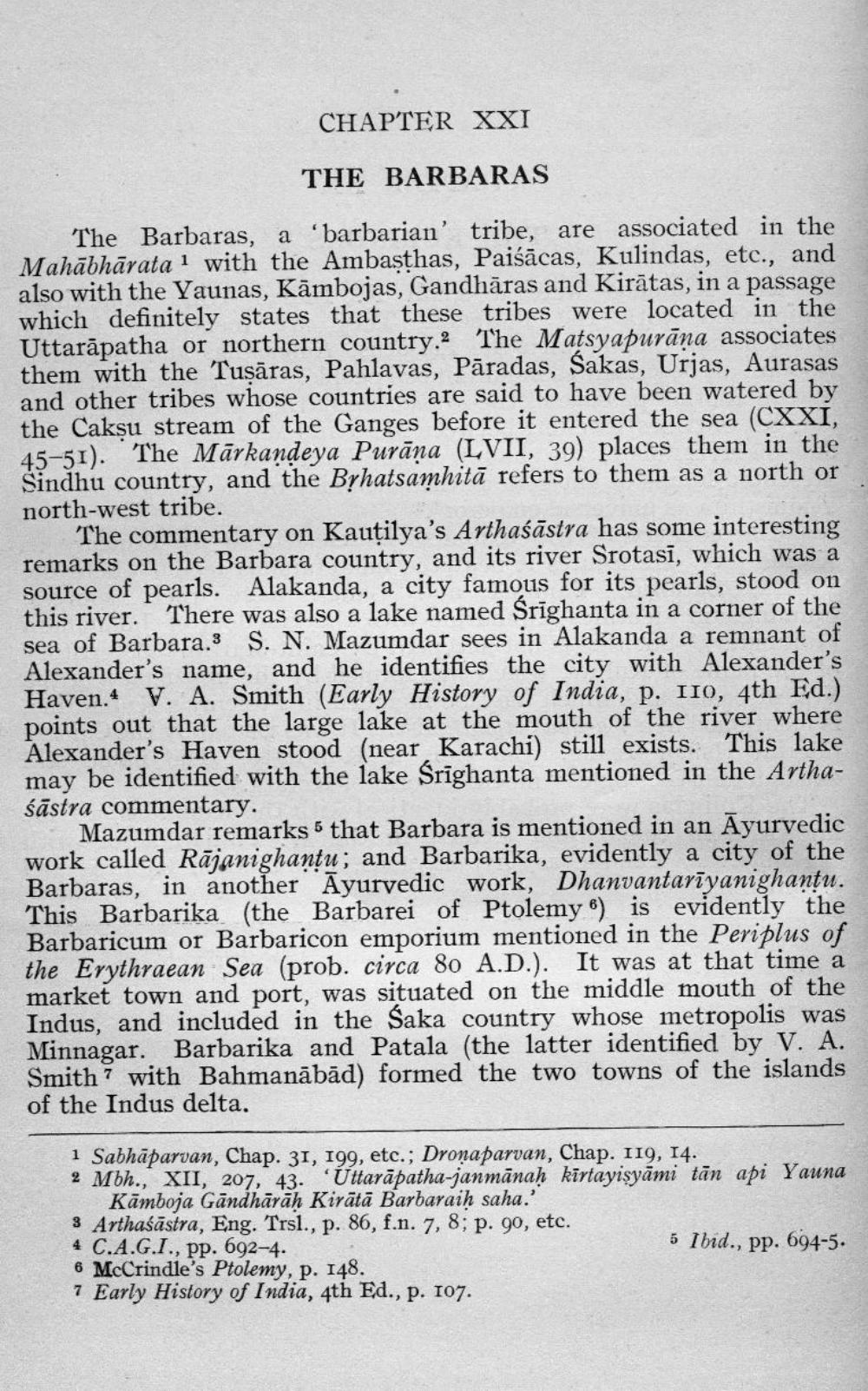________________
CHAPTER XXI
THE BARBARAS
The Barbaras, a 'barbarian' tribe, are associated in the Mahābhārata 1 with the Ambaşthas, Paiśācas, Kulindas, etc., and also with the Yaunas, Kāmbojas, Gandhāras and Kirātas, in a passage which definitely states that these tribes were located in the Uttarāpatha or northern country. The Matsyapurāna associates them with the Tusāras, Pahlavas, Pāradas, Sakas, Urjas, Aurasas and other tribes whose countries are said to have been watered by the Caksu stream of the Ganges before it entered the sea (CXXI, 45-51). "The Mārkandeya Purāna (LVII, 39) places them in the Sindhu country, and the Byhatsamhitā refers to them as a north or north-west tribe.
The commentary on Kautilya's Arthaśāstra has some interesting remarks on the Barbara country, and its river Srotasī, which was a source of pearls. Alakanda, a city famous for its pearls, stood on this river. There was also a lake named Śrīghanta in a corner of the sea of Barbara.3 S. N. Mazumdar sees in Alakanda a remnant of Alexander's name, and he identifies the city with Alexander's Haven. V. A. Smith (Early History of India, p. 110, 4th Ed.) points out that the large lake at the mouth of the river where Alexander's Haven stood (near Karachi) still exists. This lake may be identified with the lake Srīghanta mentioned in the Arthaśāstra commentary.
Mazumdar remarks 5 that Barbara is mentioned in an Ayurvedic work called Rājanighantu; and Barbarika, evidently a city of the Barbaras, in another Ayurvedic work, Dhanvantarīyanighantu. This Barbarika (the Barbarei of Ptolemy) is evidently the Barbaricum or Barbaricon emporium mentioned in the Periplus of the Erythraean Sea (prob. circa 80 A.D.). It was at that time a market town and port. was situated on the middle mouth of the Indus, and included in the Saka country whose metropolis was Minnagar. Barbarika and Patala (the latter identified by V. A. Smith ? with Bahmanābād) formed the two towns of the islands of the Indus delta.
1 Sabhāparvan, Chap. 31, 199, etc.; Drona parvan, Chap. 119, 14. 2 Mbh., XII, 207, 43. 'Uttarāpatha-janmānah kirtayisyāmi tān api Yauna
Kāmboja Gāndhārāh Kirātā Barbaraih saha.' 3 Arthaśāstra, Eng. Trsl., p. 86, f.n. 7, 8; p. 90, etc. 4 C.A.G.I., pp. 692-4.
5 Ibid., pp. 694-5. 6 McCrindle's Ptolemy, p. 148. 7 Early History of India, 4th Ed., p. 107.




